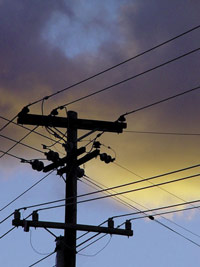
This site provides information and guidance specific to WisDOT utility coordination services and related activities.
Utility coordination for WisDOT highway improvement projects begins in planning and continues until construction has completed. The goal is to prevent utility related delays to highway improvement projects.
- Utility coordination is a two-step process. The first step involves the identification of existing utility facilities that may be in conflict with proposed highway improvement projects. The second step involves the communication and coordination of the relocation and/or adjustment of existing utility facilities that are in conflict with highway improvement projects. Regional staff are responsible for performing utility coordination on highway improvement projects in accordance with federal code, state statutes, administrative code, and WisDOT policies and procedures.
- Central office staff assists the regions with interpretation of federal code, state statutes, administrative code, and policy; reviews and approves utility agreements; establishes procedures in accordance with approved policy; and, serves as the liaison between the regions and utility companies concerning policy related to utility coordination.
- FHWA Wisconsin Division - FHWA Division Offices are local field offices that provide leadership, guidance, and direction to State Departments of Transportation in the planning, construction and maintenance of transportation projects. Working collaboratively with State partners, FHWA Division Offices ensure that the nation's roads, bridges and tunnels are safe and continue to support economic growth and environmental sustainability. Additionally, to ensure accountability, the FHWA Division Offices work with the State to develop, track and analyze activities and recommend innovative techniques and strategies to improve the performance of the transportation system. FHWA and its Division Offices are responsible for working with State Departments of Transportation to ensure that the nation's strategic investments preserve and modernize the U.S. highway system - and ultimately to save lives.